After a series of twists and turns, on the morning of October 20th, Beijing time, ESA confirmed that the "Trace Gas Orbiter (TGO)" launched in March this year successfully entered the orbit of Mars, becoming the sixth present in Mars. The detector working in orbit is also the second ESA detector to work on Mars orbit. Also arriving at Mars along with TGO was the lander, the Skia Parelli, but a few days before landing, ESA lost contact with it.
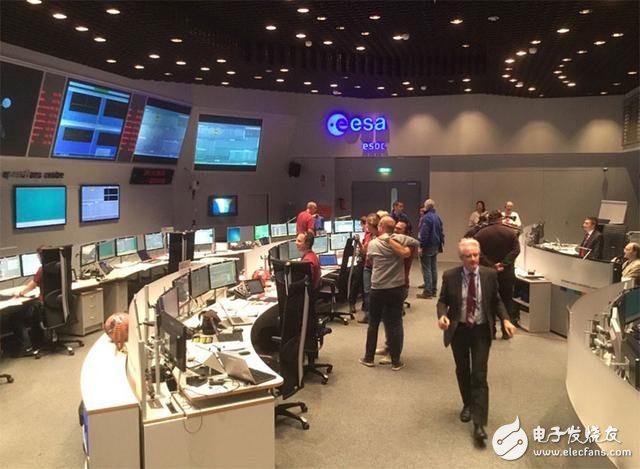
After the ESA Control Center received the TGO signal again, the staff celebrated.
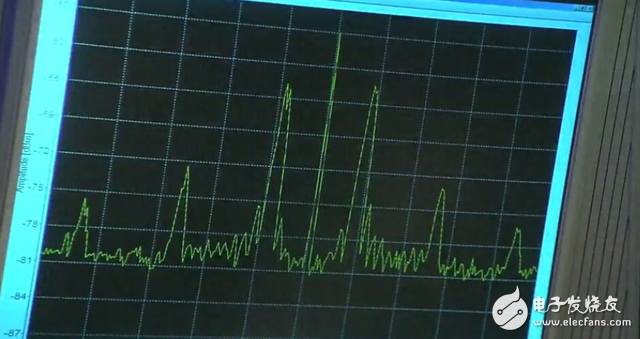
When the ESA regained the trace gas orbit detector (TGO) signal, the control hall cheered.
Thirteen years ago, in December 2003, ESA’s first Mars probe, the Mars Express, arrived at Mars with the lander "Beagle 2". The Mars Express was successfully tracked and is still working, but the Lander Beagle After landing on the 2nd, the failure of the solar panel to unfold led to the end of the mission.
The Trace Gas Orbiter (TGO) started at 21:05 last night, started the main engine and ignited for 139 minutes, adjusting the speed and direction of the orbiter to capture it by Mars. Eventually, TGO successfully entered an elliptical orbit around Mars, and the ESA Control Center (ESOC) in Darmstadt, Germany, will monitor the operation of TGO.
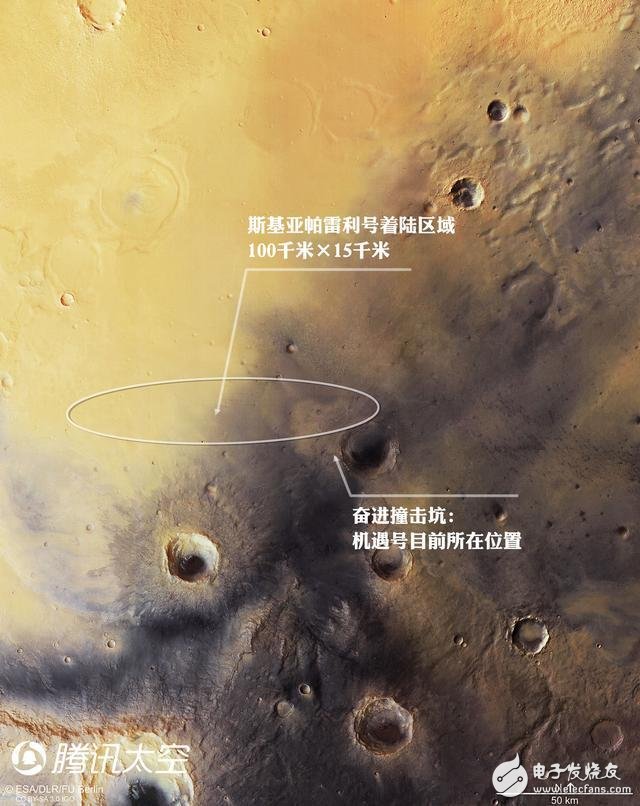
The meridian plain of the ESA Mars Express high-resolution stereo camera, the landing area of ​​the Skia Parelli in the elliptical circle, close to the Endeavour crater where NASA Opportunity is currently located.
The lander "Schiaparelli" carried by TGO was separated from the mother ship TGO at 23:42 on the 16th, Beijing time. The lander weighed 577 kilograms and was scheduled to be at 22:48 pm on the 19th Beijing time. The points will land on Mars, but as of now, ESA is still unable to determine whether the Skia Parelli has successfully landed on the surface of Mars, and the Control Center is working hard to establish contact with the Schiaparelli. However, before landing, the Schiaparelli can be confirmed by throwing a heat-resistant outsole and opening the parachute.
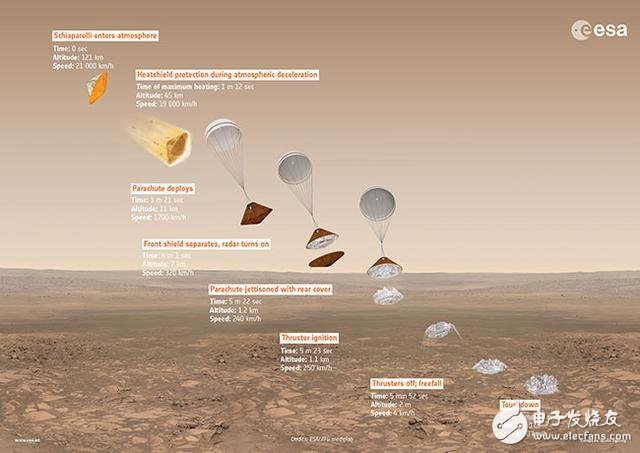
The Schiaparelli landing map of the Mars process.
Because Mars is currently 170 million kilometers away from the Earth, the entire landing process is controlled by the Schiaparelli, and the bottom heat shield, parachute, thrust reverse system and its own buffer must be used within 6 minutes according to the predetermined procedure. The structure achieves a soft landing where the parachute will be deployed 11 km from the surface of Mars and the heat shield will be discarded 6 km from the surface. At the final stage of the landing, at a distance of 1.1 km from the surface, the three counter-push engines at the bottom of the Skia Parelli were ignited, reducing the speed to less than 7 km/h. When the lander is only 2 meters from the surface of Mars, the engine is turned off and the lander freely falls to the surface of Mars. The bottom of the Skia Parelli has an impact-resistant structure that cushions the final impact.
The landing area of ​​the Skia Parelli is a 100 km & TImes; 15 km elliptical area, which is a terrace in the southern part of the meridian plateau, very close to the equator. From the previous Martian topographic map, the surface of the area is flat and smooth, which is very suitable for the landing of the Skia Parelli. In addition, scientists believe that the region has a low layer rich in hematite. On Earth, this formation is thought to form in a humid environment.
The Skia Parelli entered the Martian atmosphere at 23:42 on the 19th, Beijing time. The European Space Agency used the giant rice radio telescope (GMRT) near Pune, India to keep in touch with the lander. It is also the largest in the world. Interference array. The radio telescope began receiving signals 75 minutes before the Skia Parelli entered the Martian atmosphere, but lost contact with the Schiaparelli before the landing.
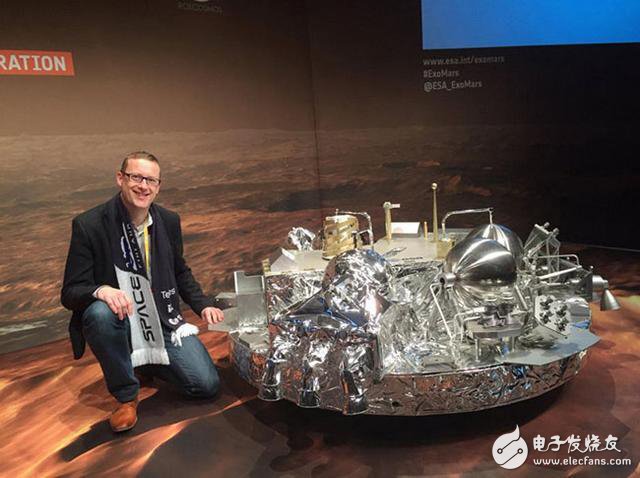
The Skia Parelli is compared to the size of the human body.
After the landing of the Skia Parelli, ESA tried to relay the Mars Express in the orbit to the landing information of the Skia Parelli, but the information sent back could not confirm the Chiapare. The case of the profit number. The NASA Mars Reconnaissance Orbiter (MRO) and MAVEN, currently on the orbit of Mars, will attempt to accept information from the Schiaparelli. If the Skia Parelli is currently safely landed, it can carry a battery that can work for three to ten days, and it will have multiple opportunities to re-establish a communication link with the Earth.
The Skia Parelli is the key technology to verify the landing of Mars, preparing for the first rover launched by ESA in 2020 to land on Mars, carrying scientific instruments to determine the wind speed, humidity, pressure and temperature of the landing site. data.
Lander Skia Parelli and Orbiter TGO belong to ExoMars, a Mars exploration project in Russia and Europe. The TGO weighs 3.7 tons and is the successor to the "Mars Express" that ESA is still working on Mars. The Aparelli weighs 577 kilograms and is named after the 19th century Italian astronomer Giovanni Schiaparalelli.
They were launched at the Baikonur launch site in Kazakhstan on March 14 this year, and the assembly took seven months to reach Mars. TGO will detect and reveal the mystery of the source of Mars methane gas and determine whether there is life on the surface of Mars. Once TGO confirms that these methane gases are derived from the biological activities on the surface of Mars, it will be the most significant discovery since humans entered the space age.
EvoTec high-voltage generators,High Voltage Alternator,Blue Color Three-Phase Generator,High Voltage Synchronous Generators have been widely used in industrial and mining, metallurgy, data centers, ports, airports and other fields.
The high voltage and low current characteristics of generators determine the advantages of long-distance transmission. The voltage range is 3300v-13800v, 400-2800kW. The EvoTec high-voltage generator has good dynamic performance, small voltage wave distortion, high efficiency, compact structure, reliable operation, long service life and good economic performance. with standard PMG and is suitable for starting of various loads needed. It is equipped with Basler AVR with parallel function.
The new generation of EvoTec high generators uses the following new materials and production processes to improve performance:-
· The new insulated back-end cover has been used to replace the traditional carbon brush structure, which can effectively eliminate the shaft current.
· The stator high-voltage coil adopts anti-corona design to minimize the generation of corona on the surface of the high voltage coil to extend the life-span of the coil insulation.
· The design of the integral vacuum with less rubber insulation system minimizes the dielectric loss and delays the aging of the high voltage insulation.
EvoTec High Voltage Generator
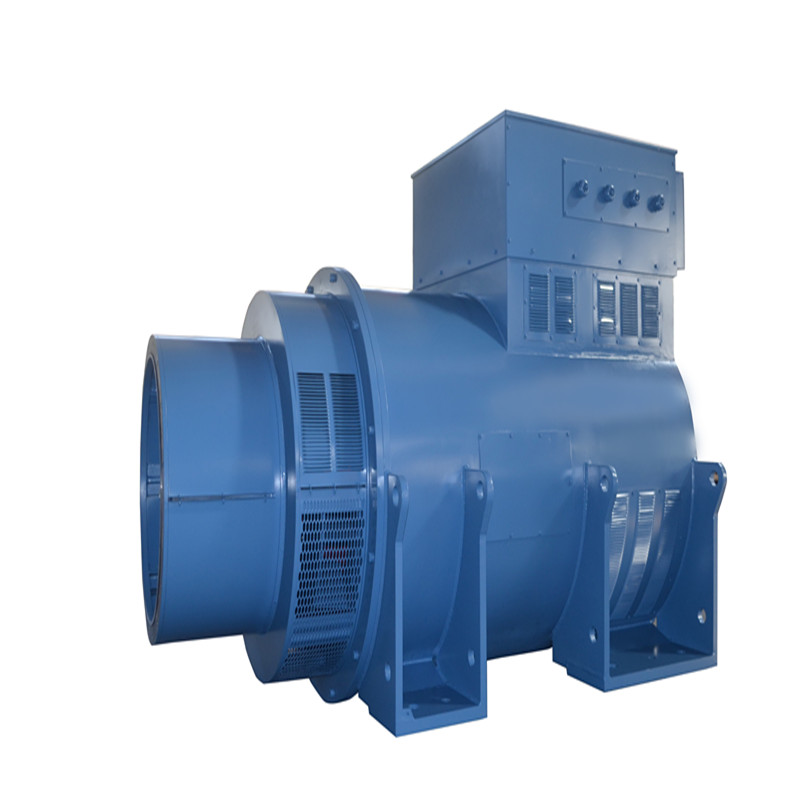
High Voltage Alternator,Evotec High Voltage Generator,Blue Color Three-Phase Generator,High Voltage Synchronous Generators
EvoTec Power Generation Co., Ltd , https://www.evotecgen.com